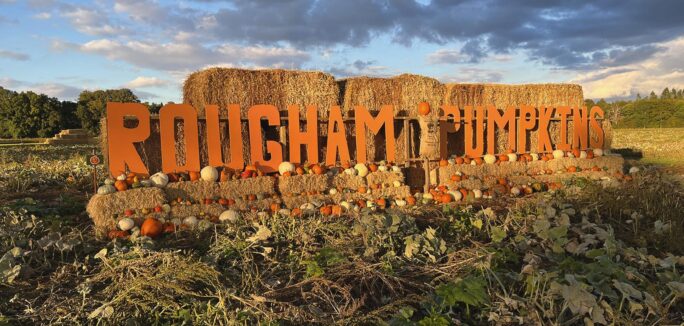Dotted across the Rougham Estate there are now some 48 colonies/hives of Honeybee assisting in pollination across the Estate and the surrounding area, providing local honey for a number of local outlets including Blackthorpe Barn at Christmas. The number of hive on the Estate has slowly increasing since Zac Blackmore started keeping honey bees on the Estate some 6-7 years ago. 2020 has seen one of the biggest increases in the number of hives with 14 additional hives placed around the Estate.

The average crop of honey for a colony of bees in this area is between 13-18kgs. On the Estate the first honey crop removed is after the Oilseed Rape petals drop from the stem around mid to late May. This crop of Honey has a tendency to set making a perfect honey for toast or stirring into coffee (no messy drips!). The bees will have foraging on Oilseed Rape in addition to Sycamore, Blackthorn, Horse Chestnut, Damsons and May Blossom (aka Hawthorn).

The ‘Main’ crop of honey is usually removed from the colonies in mid-August. The bees will have been foraging on Blackberries, Limes, Sweet Chestnut and the various pollinator strips around the Estate – Within these Borage, Phacelia and Sunflowers not only attract the Honeybees but a huge array of insects. This honey tends to remain as a liquid far longer than the earlier crop – perfect for your porridge, Weetabix or pouring on Greek yogurt as a simple dessert.
It will come as no surprise that the weather can have a major influence on the bees and pollinators in general. With the glorious hot and dry weather we enjoyed up until the end of June, very little nectar was produced for the ‘Main’ crop of Honey. Even the downpours in early July couldn’t encourage plants to produce the excess amounts of nectar usually enjoyed by the bees for later in the season. Despite this because of the good early weather the early crop of honey made up for this and overall 2020 will be an average year for honey production.

These excess amounts of nectar produced by plants are what makes honey so interesting for Zac affecting the colour and the taste – the single word honey doesn’t do the end product justice. A very clear colourless mild Borage honey is the complete opposite of the dark almost bitter tasting Sweet Chestnut Honey like that harvested from the Estate in 2018 which turned out to be a fine vintage year.











